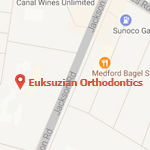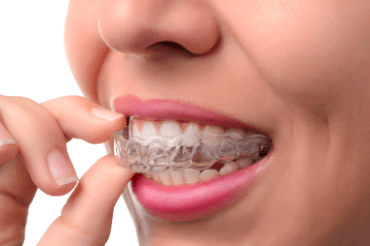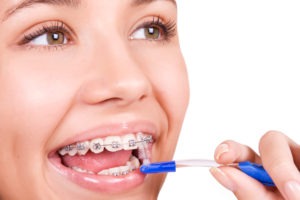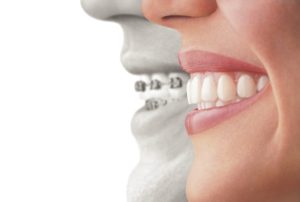20 Oct What Can I Eat with Braces This Halloween?
 Halloween is just around the corner, and we know that means kids everywhere are getting excited to spend a night dressed up as scary monsters, patrol their neighborhoods, and – of course – gorge themselves on mounds of candy. But while all that candy may be a dream come true for a child, it’s a true nightmare for teeth. The sugars and acids in candy can rot away enamel, and because many candies are hard, sticky, gooey, and crunchy, they pose a mortal risk for braces. As your dedicated Medford orthodontist, we at Euksuzian Orthodontics wanted to give some guidance on the best candies to protect braces this Halloween.
Halloween is just around the corner, and we know that means kids everywhere are getting excited to spend a night dressed up as scary monsters, patrol their neighborhoods, and – of course – gorge themselves on mounds of candy. But while all that candy may be a dream come true for a child, it’s a true nightmare for teeth. The sugars and acids in candy can rot away enamel, and because many candies are hard, sticky, gooey, and crunchy, they pose a mortal risk for braces. As your dedicated Medford orthodontist, we at Euksuzian Orthodontics wanted to give some guidance on the best candies to protect braces this Halloween.
How to Protect Braces During Halloween
By and large, braces are most susceptible to candies that are particularly hard, crunchy, sticky, or gooey: anything with a risk of breaking off a bracket or getting stuck under an archwire carries the most serious potential for damage. For those reasons, avoid candies like the following:
- Jolly Ranchers
- Sugar Daddies
- Tootsie Rolls
- Lollipops
- Laffy Taffy
Another thing to keep in mind is that while sugar presents a less immediate threat, it still can cause tooth decay and derail treatment. For this reason, candies that contain xylitol – a sugar substitute – will be less damaging than candies containing pure sugar.
So what can you eat this Halloween? In general, look for candies that are soft but not sticky, don’t require much bite force to chew, or dissolve in the mouth easily. Try to opt for candies like these:
- Soft peanut butter cups
- Ice cream
- Soft milk chocolate
- Milk shakes
- Smoothies
- Soft candy bars
- Fruits like apples cut into tiny pieces
Contact Your Medford, NJ Orthodontist
With a careful eye towards dietary health, you can easily protect braces this Halloween without ruining the fun. We hope you found this guide helpful, and as always, we’re here for you if you have any questions. Feel free to contact us if you’d like more information about keeping braces safe this Halloween, and don’t hesitate to schedule an appointment at our office if you want a post-candy checkup. Until then, we wish you a happy, braces-friendly Halloween!





 The team at Euksuzian Orthodontics strives to make your experience wearing braces as enjoyable and comfortable as possible! Our Medford, NJ orthodontist, Dr. Sarkis Euksuzian, specializes in gentle and comfortable orthodontic care to make wearing braces a positive experience. Here are some tips for getting the most out of your braces to help ensure the time you spend in treatment is positive and enjoyable.
The team at Euksuzian Orthodontics strives to make your experience wearing braces as enjoyable and comfortable as possible! Our Medford, NJ orthodontist, Dr. Sarkis Euksuzian, specializes in gentle and comfortable orthodontic care to make wearing braces a positive experience. Here are some tips for getting the most out of your braces to help ensure the time you spend in treatment is positive and enjoyable. Here at Euksuzian Orthodontics,
Here at Euksuzian Orthodontics,  Our Medford, NJ orthodontist
Our Medford, NJ orthodontist 
